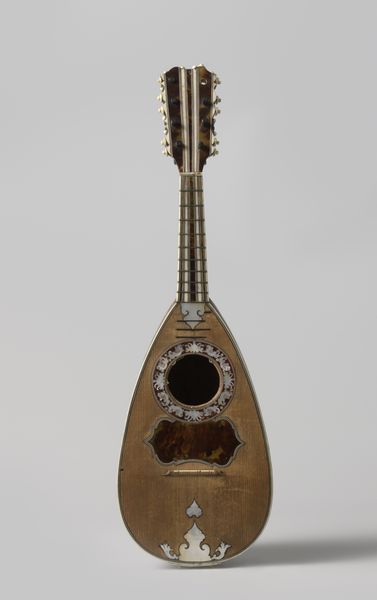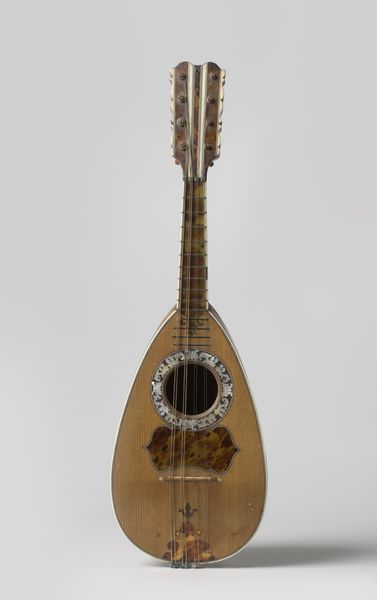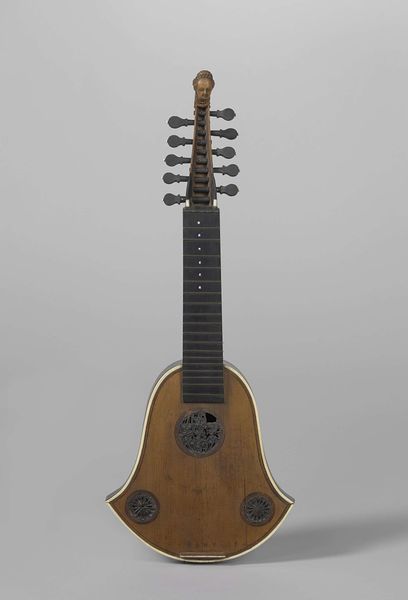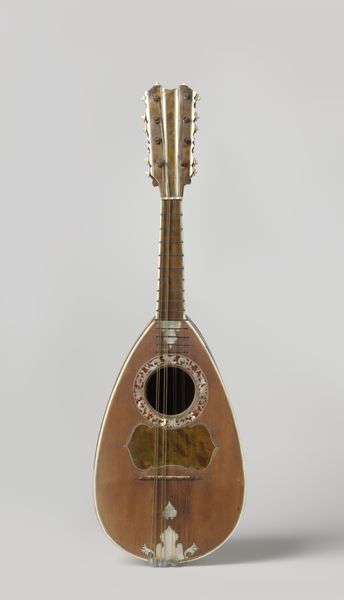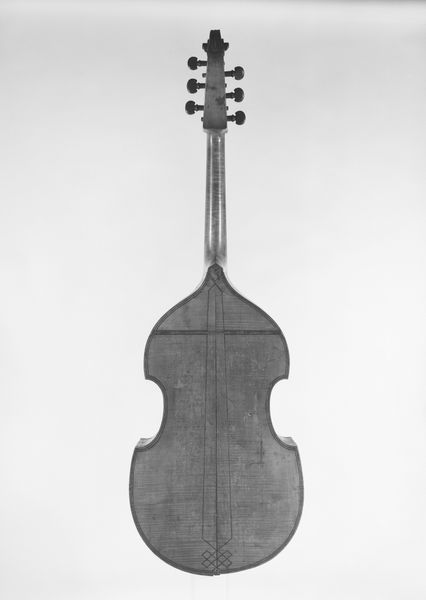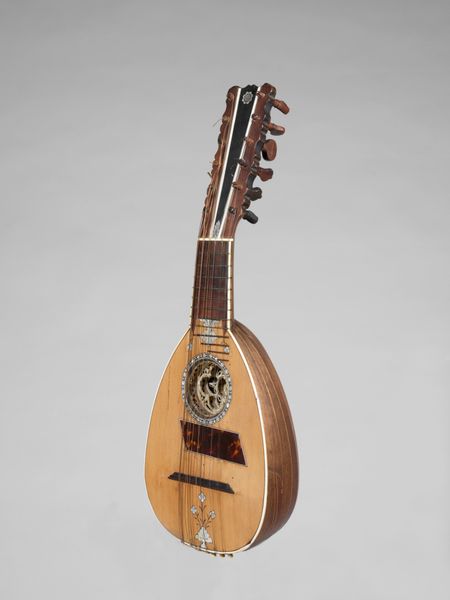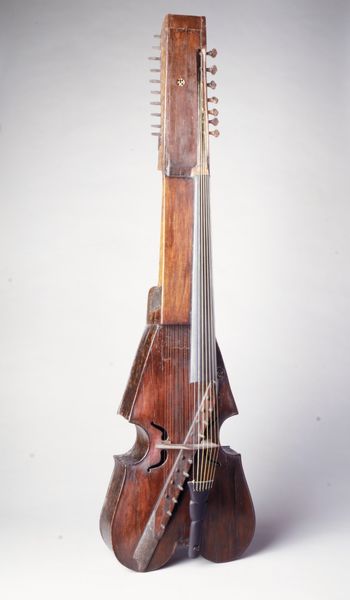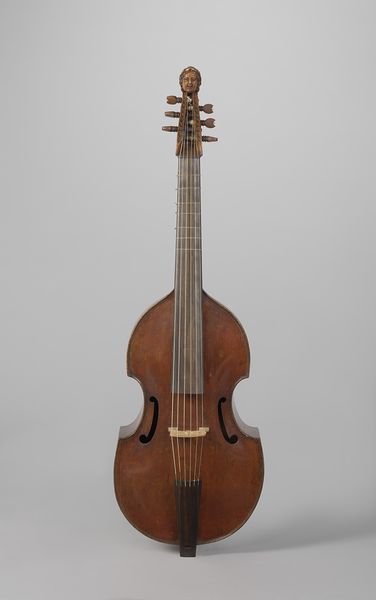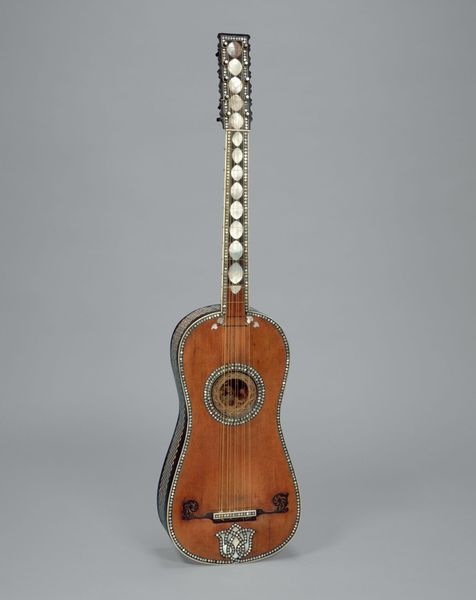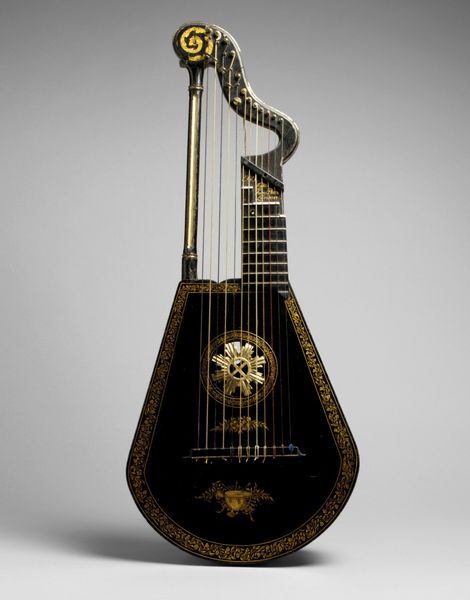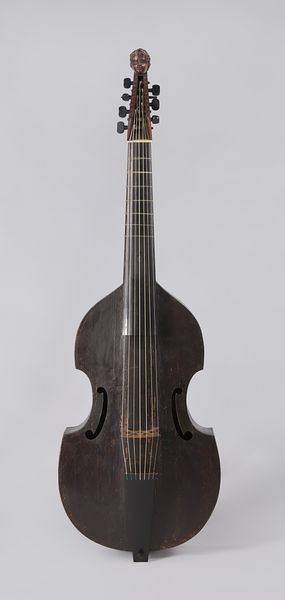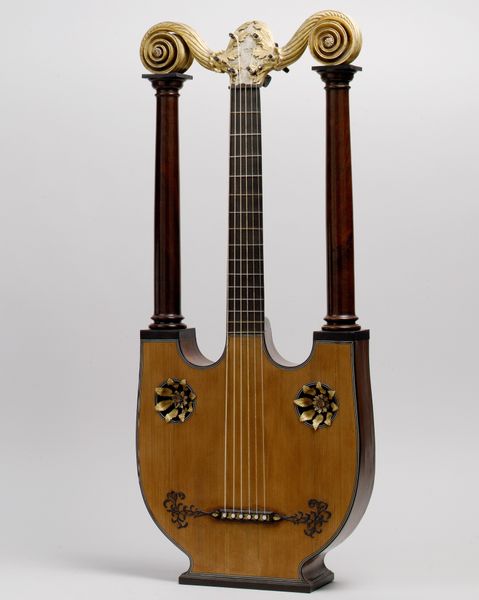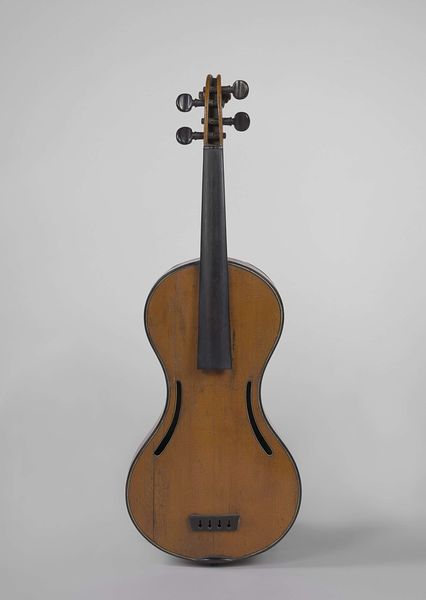
Dimensions: support: 832 x 197 mm frame: 920 x 275 x 47 mm
Copyright: © Tate | CC-BY-NC-ND 4.0 DEED, Photo: Tate
Curator: Nicholson's "1933 (guitar)," housed here at Tate St Ives, presents a muted palette within its narrow, vertical frame. It immediately evokes a sense of quiet contemplation. Editor: Yes, it's striking how the subdued tones and the elongated format contribute to a feeling of both intimacy and restraint. The guitar itself, as a subject, is rich with cultural association. Curator: Indeed. The guitar is a potent symbol, often linked to bohemian life, musical expression, and even romantic longing. Here, though, it’s rendered almost ghostlike, stripped of its vibrancy. The rough texture and layered lines invite closer scrutiny of the material itself. Editor: The layering creates a sense of depth despite the flattened picture plane, disrupting any clear, coherent narrative. The guitar's form becomes a vessel for cultural memory. Curator: Precisely. Its muted presence speaks to a broader exploration of form and space rather than a literal depiction. In that way, it remains quite radical in its composition and abstraction. Editor: I find myself drawn to the contrast between the expected passion of the instrument and the work's prevailing melancholy. Curator: A beautiful, if haunting, tension.
Comments
Join the conversation
Join millions of artists and users on Artera today and experience the ultimate creative platform.
tate 7 months ago
⋮
By using an oddly shaped piece of wooden board rather than canvas, Nicholson created a work that lies somewhere between sculpture and painting. The effect is heightened by the texture of the surface, which was prepared with a layer of special plaster that the artist cut into while it was still wet. Though now framed, Nicholson preferred to leave the work unprotected. Photographs show that instead of hanging it on a wall like a conventional painting, he kept his 'scratched surrealist guitar' propped on a mantelpiece in his studio. Gallery label, August 2004
